Find the equivalent focal length of the system for paraxal rays parallel to axis

1feq=1f1+1f2−df1f2=110−2010(−10)=15
⇒feq=5cm
Topper's Solved these Questions
- GEOMATRICAL OPTICS BOOK - RESONANCECHAPTER - GEOMATRICAL OPTICS EXERCISE - Exercise-1
142 Videos
- GEOMATRICAL OPTICS BOOK - RESONANCECHAPTER - GEOMATRICAL OPTICS EXERCISE - Exercise-2
63 Videos
- GEOMATRICAL OPTICS BOOK - RESONANCECHAPTER - GEOMATRICAL OPTICS EXERCISE - Advance level Problems
35 Videos
- EXPERIMENTAL PHYSICSBOOK - RESONANCECHAPTER - EXPERIMENTAL PHYSICSEXERCISE - PART -II
10 Videos
- GRAVITATIONBOOK - RESONANCECHAPTER - GRAVITATIONEXERCISE - HIGH LEVEL PROBLEMS
16 Videos
Similar Questions
Find the focal length of equivalent system shown in Figure.
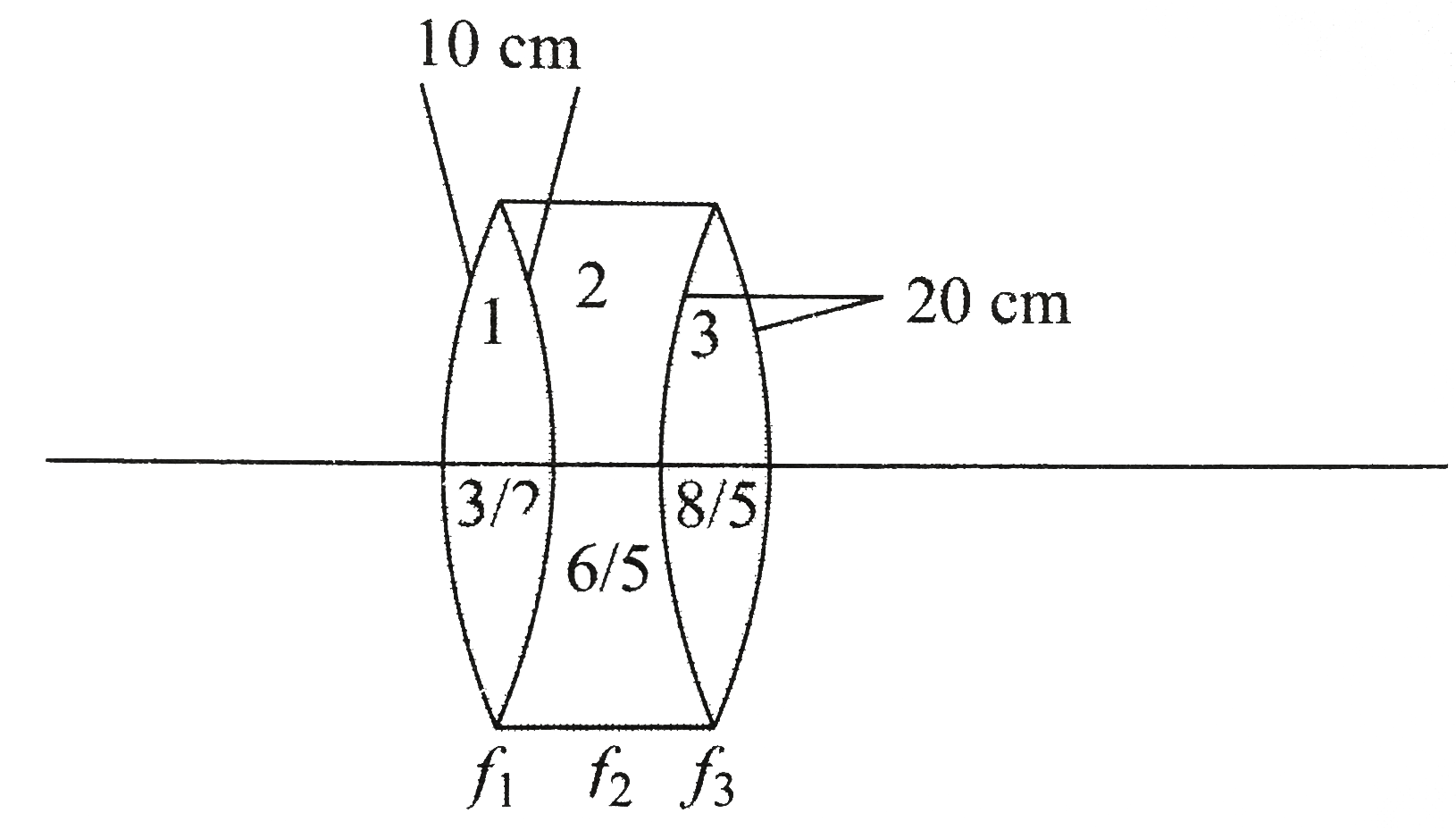
View SolutionChromatic aberration is due to (A) Dependence of focal length of a lens on the wave length of light used (B) Dependence of focal length of the lens on the distance of parallel rays from the axis (C) Both A and B (D) Neither 1nor 2
View Solution
Knowledge Check
Find equivalent spring constant for the system
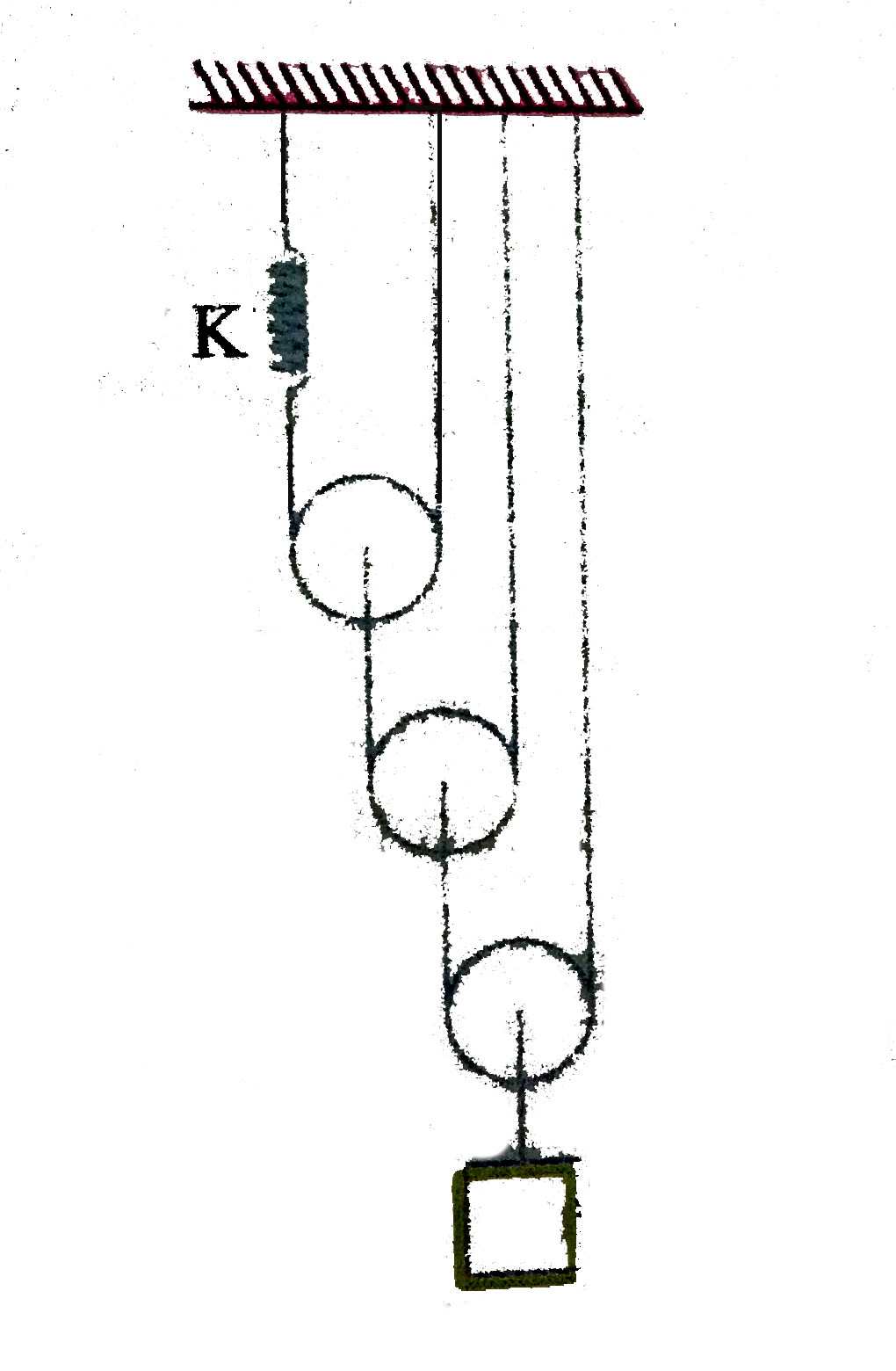 .AkB2KC64KD8K
.AkB2KC64KD8KFind equivalent spring constant for the system:
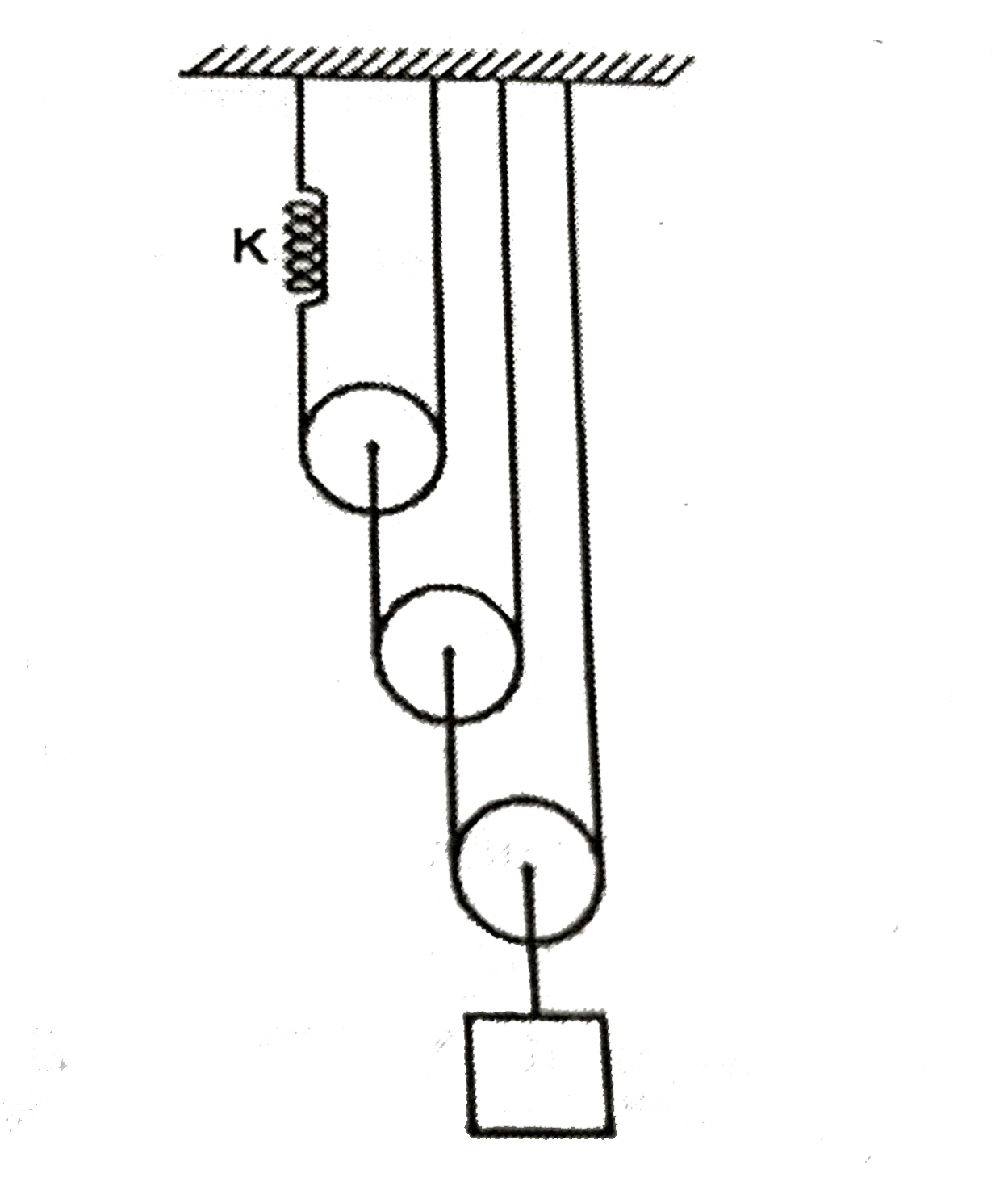 AKB2 KC64 KD8 K
AKB2 KC64 KD8 KFind out equivalent focal length of given lens combination
_2019_CBT5_E01_036_Q01.png) A(Rμ1−μ2)B(2Rμ1−μ2)C(4Rμ1−μ2)D(Rμ1+μ2)
A(Rμ1−μ2)B(2Rμ1−μ2)C(4Rμ1−μ2)D(Rμ1+μ2)
See the figure
Find the equivalent focal length of the combination shown in the figure and position of image.
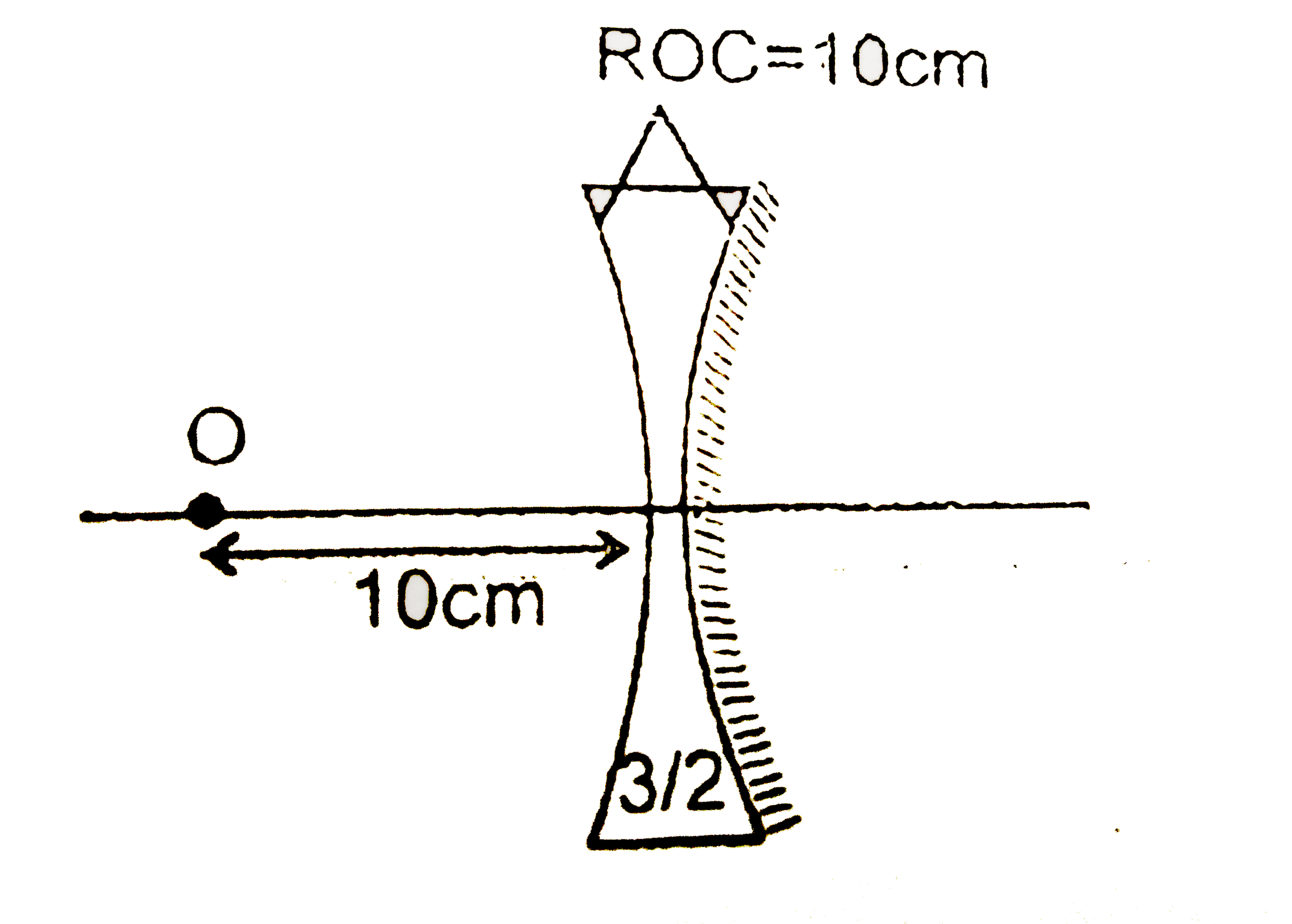
View Solution
Find focal length of the system shown in figure from left hand side.
View SolutionDeduce the equivalent focal length of two convex lenses of focal lengths F1andF2 when placed in contact.
View SolutionFinding equivalent focal length
Two equiconcave lens of focal length -20cm each having a refractive index of 1.50 are kept together and the space between them is filled with water as shown in Fig. 34-49. Find the equivalent focal length of the arrangement thus formed.
View SolutionA thin equi-convex lens having radius of curvature 10 cm is placed as shown in figure. Calculate focal length of the lens, if parallel rays are incident as shown.
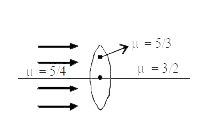
View Solution
